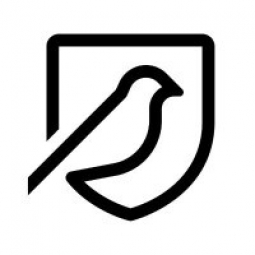Technology Category
- Cybersecurity & Privacy - Identity & Authentication Management
- Sensors - Level Sensors
Applicable Industries
- Buildings
- Cement
Use Cases
- Construction Management
- Onsite Human Safety Management
Services
- System Integration
About The Customer
United Living Group is a UK-based company that operates in the infrastructure, new homes, and property services sectors. The company consists of three complementary businesses: United Living Property Services, Infrastructure Services, and New Homes. United Living employs over 1,100 people and has a national supply chain network of over 2,000 resources supporting their projects. The company is committed to bringing together people and technology to make the industry safer and more collaborative. United Living has a turnover of £550 million and a direct workforce of around 2,000 employees.
The Challenge
United Living, a UK-based infrastructure, new homes, and property services group, was facing a significant challenge in managing health and safety risks across its operations. The company, which employs over 1,100 people and has a supply chain network of over 2,000 resources, was receiving a mere 250 'close call' reports per month. These reports, which are used to identify potential hazards and risks, were not sufficient for a company of United Living's size and scope. The company's Group Safety, Health, Environment, and Quality (SHEQ) Director, Sean Luchmun, recognized the need for a significant increase in these reports to better manage risks and improve safety across the company's operations. The challenge was to change the company's culture to encourage employees to report close calls and to implement a system that would make reporting easier and more efficient.
The Solution
United Living launched a cultural change program to encourage employees to report close calls. The program used the slogan 'Don't walk by' to encourage employees to act positively when they saw hazardous behavior or conditions. The company also implemented EcoOnline's Quick Report system across all its divisions to make reporting easier and more efficient. The Quick Report system allows site managers and project managers to file reports via their laptops, while site operatives can use mobile phones or submit paper slips. The company also plans to extend the system to its subcontractors, who can make up 90% of the workforce on sites where the company is the principal contractor. The Quick Report system offers the facility to allow guests access to the system by scanning a QR code with their phones. This extension could potentially increase the number of reports fourfold.
Operational Impact
Quantitative Benefit

Case Study missing?
Start adding your own!
Register with your work email and create a new case study profile for your business.
Related Case Studies.

Case Study
System 800xA at Indian Cement Plants
Chettinad Cement recognized that further efficiencies could be achieved in its cement manufacturing process. It looked to investing in comprehensive operational and control technologies to manage and derive productivity and energy efficiency gains from the assets on Line 2, their second plant in India.

Case Study
Energy Saving & Power Monitoring System
Recently a university in Taiwan was experiencing dramatic power usage increases due to its growing number of campus buildings and students. Aiming to analyze their power consumption and increase their power efficiency across 52 buildings, the university wanted to build a power management system utilizing web-based hardware and software. With these goals in mind, they contacted Advantech to help them develop their system and provide them with the means to save energy in the years to come.

Case Study
Intelligent Building Automation System and Energy Saving Solution
One of the most difficult problems facing the world is conserving energy in buildings. However, it is not easy to have a cost-effective solution to reduce energy usage in a building. One solution for saving energy is to implement an intelligent building automation system (BAS) which can be controlled according to its schedule. In Indonesia a large university with a five floor building and 22 classrooms wanted to save the amount of energy being used.

Case Study
Powering Smart Home Automation solutions with IoT for Energy conservation
Many industry leaders that offer Smart Energy Management products & solutions face challenges including:How to build a scalable platform that can automatically scale-up to on-board ‘n’ number of Smart home devicesData security, solution availability, and reliability are the other critical factors to deal withHow to create a robust common IoT platform that handles any kind of smart devicesHow to enable data management capabilities that would help in intelligent decision-making

Case Study
Protecting a Stadium from Hazardous Materials Using IoT2cell's Mobility Platform
There was a need for higher security at the AT&T Stadium during the NFL draft. There was a need to ensure that nuclear radiation material was not smuggled inside the stadium. Hazmat materials could often be missed in a standard checkpoint when gaining entry into a stadium.







